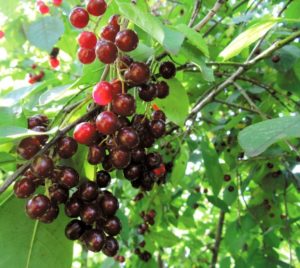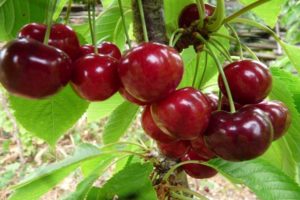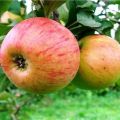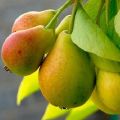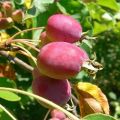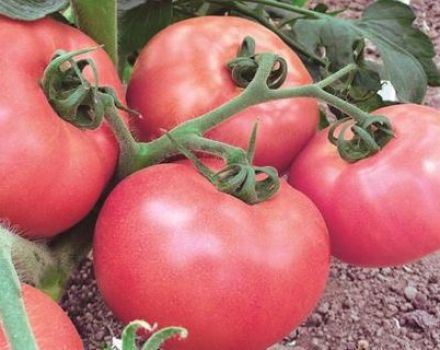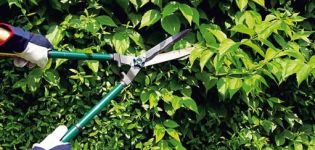Description and characteristics of cherry varieties Vocation, history and features of cultivation
The cherry variety attracts gardeners and summer residents by the relatively small tree height combined with good yield. In addition, it does not require special care, easily tolerates low temperatures in winter, and the berries have a pleasant taste.
History of origin
This variety was bred in the city of Melitopol by breeders of the Ukrainian NNI of gardening under the leadership of N.I. Turovtsev. The working name of this variety is Rosinka. Cherry was created by crossing the following two varieties: Samsonovka and Melitopol dessert. This circumstance led to the fact that the people also call it Samsonovka Melitopol. The exact time of breeding this variety has not been fixed, but it is known that in the 80s of the twentieth century, it was already planted in horticultural farms.
Description of the variety
The height of a cherry tree of the Vocation variety can reach 2-2.5 meters. But in appearance it is not a shrub, but a dwarf tree, with a rounded crown and lush foliage.
Interesting! During the period of flowering and ripening of berries, cherry Vocation can be a decorative decoration of a personal plot.
This dwarf plant is mainly grown in the southern regions of Russia and Ukraine. The description of the variety notes that during the winter months this variety can easily withstand frosts down to -25 degrees. The fruit has a flat-round shape and a relatively large weight - 5-6 grams per berry. The pulp inside the fruit is red-burgundy. The middle is juicy.
The taste is intensely sweet, with a slight sourness. The squeezed juice has a deep red tint. The stone is freely separated from the pulp after the fruit is ripe. Expert tasters assess its taste at 4.6 points on a 5-point scale. The berries contain: 10.3% sugar, 0.96% acid, 16.48% dry matter.

Growing features
Plants can be planted in the ground both in spring and in autumn. But where the temperature is very low in winter, planting in the fall is undesirable. Young seedlings may die.
Seat selection
Favorable growth forecast for those cherry trees of the Vocation variety that grow in sunny, windless areas. It is not recommended to plant a cherry orchard in areas where cherry trees also grew less than 5 years before.
If the soil at the planting site is heavy, add sand to lighten it. Acidic soils are alkalized with wood ash. Landing in areas where groundwater approaches the surface by less than 1.5-2 meters is categorically contraindicated.

It is not advisable to plant plants of the Solanaceae family that have one diseases with cherry trees... Common diseases in cherries are also with gooseberries, currants and sea buckthorn.
Good neighbors are:
- Cherry plum.
- Tern.
- Honeysuckle.
- Grapes.
- Rowan.
Landing
Cherry is planted with seedlings about 1 meter high. The length of the root system should not be less than 20-30 centimeters. The foliage on the seedlings should not show signs of damage or disease. Immediately before planting, the root system is soaked with a solution of the fungicide Maxim.

Spring planting of seedlings is carried out before budding on them. The distance between the planted plants should be about 3-4 meters in order to maximize the sun's rays on the plant. A young tree is placed in a hole in which a peg is pre-installed. The root system is evenly straightened, and then it is sprinkled with earth to the level of the root collar. The seedling is tied to a peg and watered, and the soil is mulched.
Care
The main requirements to be met when growing cherries:
- Irrigation regime.
- Pruning branches.
- Feeding with mineral and organic fertilizers.
- Protection against diseases and pests.
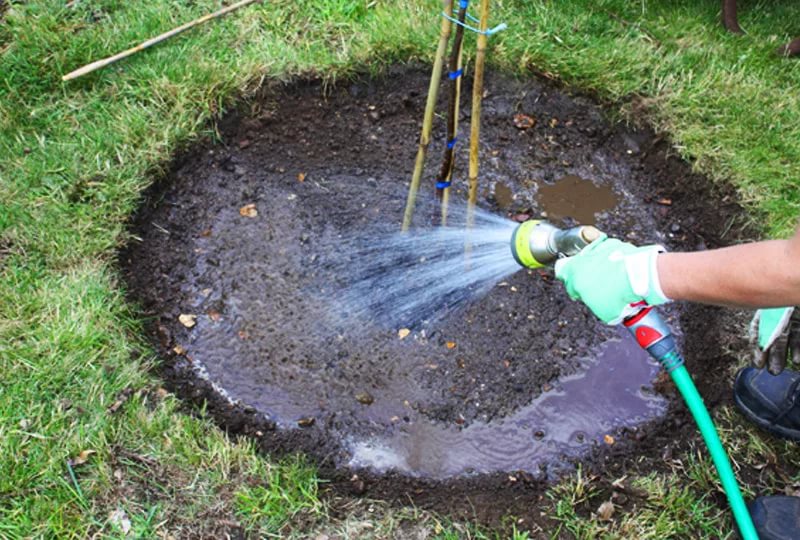
Watering
The planted cherries should not be overfilled with water. It is enough to ensure that the soil around it is always moist. Excess moisture negatively affects the root system, which from this begins to rot.
Top dressing
In the process of planting a tree, organic fertilizers are applied. At the fruiting stage, the next stage of feeding begins. In spring and at the beginning of the summer season, fertilizers are used, which contain nitrogen. After harvesting, fertilizing from phosphorus-potassium fertilizers is applied.
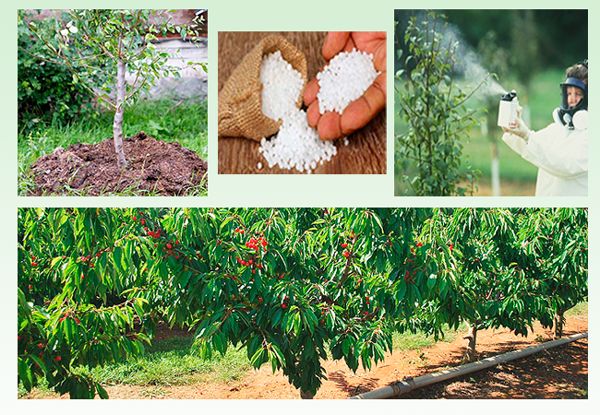
Pruning
Pruning unnecessary branches is carried out in the spring, before bud break. At this time, you can remove damaged branches, as well as dried ones. In addition, branches should be removed whose growth is directed into the crown.
Pros and cons of the variety
Of the positive aspects of the cherry variety Vocation, the following can be distinguished:
- Increased yield - up to 30 kilograms per tree.
- The positive taste of the fruit.
- Uncomplicated cleaning process due to the low height of mature trees.
- Early ripening of berries.
- Versatility of use.
- Good ability to resist diseases and pests.
- Undemanding to watering.

The disadvantages of the variety include the following:
- The need to plant pollinators near trees.
- Weak frost resistance.
Diseases and pests
To protect the tree from fungal diseases, after harvesting the fruits, before the leaves fall off, they are sprayed with a urea solution (1 tablespoon of the product is taken for 1 bucket of water). After the leaves fall, the tree is sprayed with Bordeaux liquid.
In the spring, before the buds begin to bloom, they are also sprayed with Bordeaux liquid. After the buds bloom, the trees are treated with Horus, Skor or Topsin-M.
As a prophylaxis against the invasion of harmful insects, the branches are treated twice a season with Fitoverm or a prepared aqueous solution of tobacco dust.
